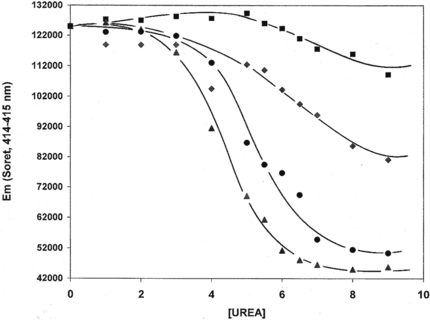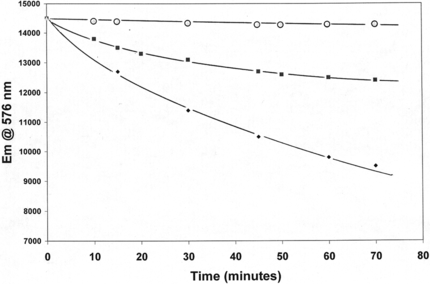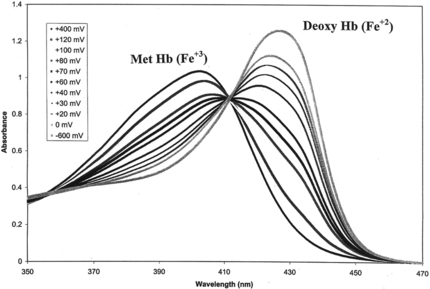Figures & data
Figure 1 Isothermal unfolding of invertebrate acellular hemoglobins in the presence of urea at 37°C, 50 mM Hepes, 100 mM KCl, pH 7.0. Astarte Hb (▪), Cardita Hb (♦), Lumbricus Hb (•), and Arenicola Hb (▴).

Table 1. Formal redox potentials of hemoglobin-base oxygen carriers by thin-layer spectroelectrochemistry (T = 20°C)
Figure 2 Autoxidaion of Lumbricus Hb (♦), Arenicola Hb (▪), and Cardita Hb (○) at 37°C. Decreases in the Abs576/Abs540 ratio reflect the conversion of oxyHb to metHb. All solutions contain 50 mM Hepes, 100 mM KCl, pH 7.0.

Figure 3 Comparison of oxidation of Arenicola Hb (○), Lumbricus Hb (▪), and HbA (♦) by Fe+3-ATP complex at 37°C. The HbA data (T = 25°C) is from Harrington and Hicks (14).

Figure 4 Absorbance spectra of Arenicola hemoglobin at differing potentials in the absence of oxygen (+ 400 mV to − 600 mV). The fully oxidized ArHb is indicated by λmax = 402 nm and the fully reduced ArHb is indicated by λmax = 425 nm. All potentials were measured against Ag/AgCl reference electrode at 20°C.

Table 2. Reduction (heme-Fe+3 → heme-Fe+2) of terrestrial and marine acellular Hbs by ascorbic acid and glutathione at T = 20°C, pH 7.0